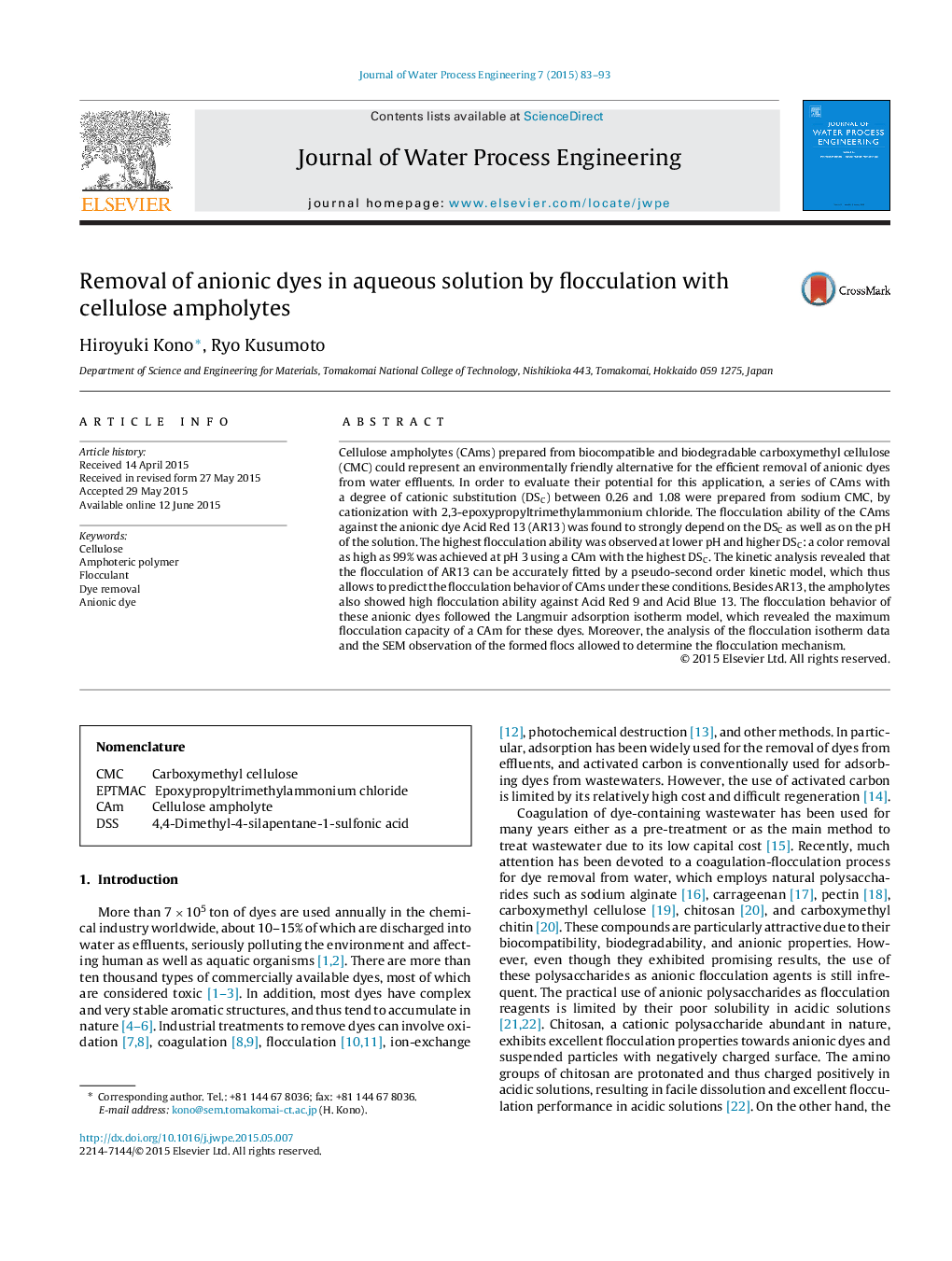| کد مقاله | کد نشریه | سال انتشار | مقاله انگلیسی | نسخه تمام متن |
|---|---|---|---|---|
| 232603 | 465294 | 2015 | 11 صفحه PDF | دانلود رایگان |
• Cellulose ampholytes were prepared by cationization from carboxymethyl cellulose.
• The polyampholytes exhibit good flocculation ability towards anionic dyes.
• Low pH and high cationic degree of substitution maximize the flocculation ability.
• The flocculation follows a pseudo-second order kinetics.
• The flocculation process follows the Langmuir adsorption isotherm model.
Cellulose ampholytes (CAms) prepared from biocompatible and biodegradable carboxymethyl cellulose (CMC) could represent an environmentally friendly alternative for the efficient removal of anionic dyes from water effluents. In order to evaluate their potential for this application, a series of CAms with a degree of cationic substitution (DSC) between 0.26 and 1.08 were prepared from sodium CMC, by cationization with 2,3-epoxypropyltrimethylammonium chloride. The flocculation ability of the CAms against the anionic dye Acid Red 13 (AR13) was found to strongly depend on the DSC as well as on the pH of the solution. The highest flocculation ability was observed at lower pH and higher DSC: a color removal as high as 99% was achieved at pH 3 using a CAm with the highest DSC. The kinetic analysis revealed that the flocculation of AR13 can be accurately fitted by a pseudo-second order kinetic model, which thus allows to predict the flocculation behavior of CAms under these conditions. Besides AR13, the ampholytes also showed high flocculation ability against Acid Red 9 and Acid Blue 13. The flocculation behavior of these anionic dyes followed the Langmuir adsorption isotherm model, which revealed the maximum flocculation capacity of a CAm for these dyes. Moreover, the analysis of the flocculation isotherm data and the SEM observation of the formed flocs allowed to determine the flocculation mechanism.
Journal: Journal of Water Process Engineering - Volume 7, September 2015, Pages 83–93
